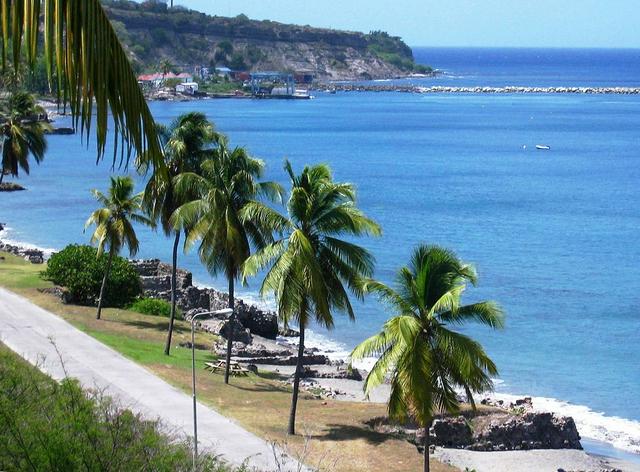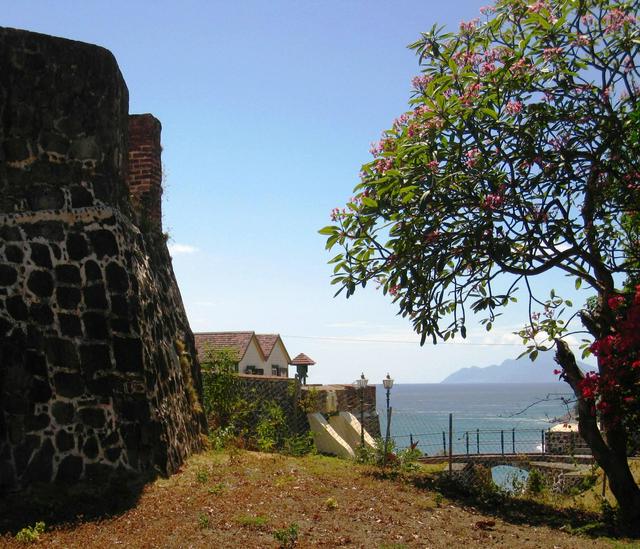
Sint Eustatius, locally known as Statia, is a small Dutch island in the Caribbean.
Statia is a very small island, and it's very laid back and quiet. Do not come to Statia expecting nightlife, shopping, etc, or you will be disappointed. Nonetheless the island has considerable charm of its own, assuming you can slow down and appreciate what surrounds you. Although it is a Dutch island, everyone speaks English.
Swimming is possible at the north end of Oranjestad Bay (the more sheltered Caribbean coast) where there is still a decent amount of sand. There is a spectacular long sandy beach on the Atlantic coast which is good to walk along, but the waves and currents are so strong that it is not safe to swim there.
Politically, Sint Eustatius is a "special municipality", fully integrated in the Netherlands proper. The capital, Oranjestad (Dutch for Orange Town) is divided into Lower Town, a single street by the water front, and Upper Town, which is the main part of town. The largest and longest running industries on the island are tourism (mostly dive tourism) and an oil depot for tankers from Venezuela.
Statia is on Atlantic time (GMT-4): same as US Eastern Daylight Time, one hour ahead of US Eastern Standard Time.
The St. Eustatius Historical Foundation published a very nice little book, available almost everywhere, that outlines a 1-mile walking tour of the capital, Oranjestad. The tour route starts at the port and winds through all the key historical sites. The central district of the capital has a number of very attractive restored buildings of historical interest, including a museum run by the St Eustatius Historical Foundation. You could pick the book up at the headquarters of STENAPA, which is only a few yards from the port in Lower Town.
You can hike The Quill, the island's dormant volcano. You can visit the botanical gardens. Or you can go diving or snorkelling; the island is famous for its underwater life.
On land, the animal life includes some large iguanas. An abundance of goats, cows and chickens roam freely. Most of them no longer belong to anyone in particular, but are instead remnants of the custom that those who own more animals have more wealth. A concerted effort is being made to round these animals up and perhaps fence them in, because of their environmental impact. Some maybe/maybe not feral cats and dogs also wander about. Do not expect one to curl up in your lap while you read a book, but you might be able to lure an occasional visitor to adopt you by putting some food outside.
In terms of history and archeology, Statia was at one point the most important port in the New World. During the 18th century it rose to prominence through a combination of lax Dutch trading controls and the American Revolution. Successive transfers between Dutch, British and French control compelled the once-prosperous merchant community to seek better profits elsewhere, but the archaeological record records their presence. Hence Statia's current motto, "The Historic Gem." Nowadays, the only visible record of its once-proud presence are the fragments of pottery incorporated into local driveways and a fair amount of mostly crumbling) 18th century Caribbean architecture. An archaeological field station run by the Sint Eustatius Center for Archaeological Research (SECAR) is an effort to restore the heritage of Statia for American history.
People who are interested in nature should definitely visit the headquarters of STENAPA (the island's national parks foundation) in Lower Town a short walk from the harbor, and talk to the staff there who will be able to suggest the most interesting areas for you to go to.
Wave and say, “Good Morning” and “Good Afternoon” as the locals are very friendly and it is a known custom on the island.

Statia uses the U.S. dollar, denoted by the symbol "$" (ISO currency code: USD). It is divided into 100 cents.
The majority of the island businesses do not accept credit cards. Bring plenty of US dollars. There are only two ATMs on the island, one at the bank and one at the airport. These ATMs run out of money frequently and then are sometimes not refilled for a couple of days.
As is the case for almost any beach destination in Florida or the Caribbean, bring insect repellent. Statia has one pretty good supermarket, which stocks almost all necessities.
Try the "Fruit Tree" for local Dutch cuisine. "Smoke Alley" is where most of the US contractors eat; they serve large portions and an abundance of American staples (cheese steaks, burgers, etc.) There are five different Chinese food restaurants on the island; "Sonny's" is the best.
 There are only a few places to drink, after all, the island is less than 8 square miles in area. The longest running, owner-operated bar is "Chuckie's". The expatriate community typically restricts itself to this bar as the owner will frequently drink with patrons and keep the bar open until the last customer leaves.
There are only a few places to drink, after all, the island is less than 8 square miles in area. The longest running, owner-operated bar is "Chuckie's". The expatriate community typically restricts itself to this bar as the owner will frequently drink with patrons and keep the bar open until the last customer leaves.
Don't drink the tap water without boiling it first.
Everyone leaving Statia has to pay a departure fee in US dollars.
